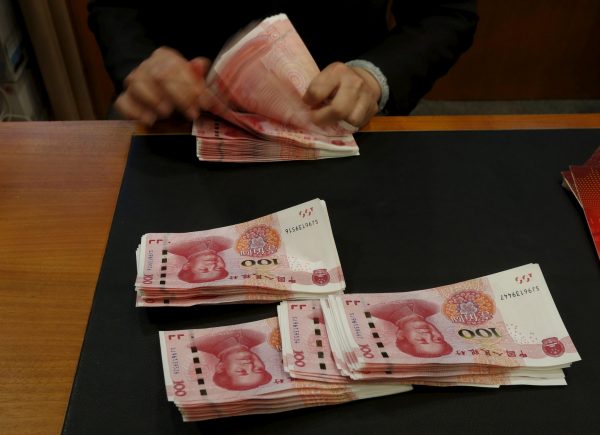Some analysts are speculating whether the fall in the renminbi is a deliberate move by Beijing to offset the economic costs incurred by US tariffs on Chinese goods. The bilateral trade dispute is worsening problems for an already slackening Chinese economy, which is registering a declining growth rate of 6.5 per cent in the current quarter.
China’s slowing growth rate is largely a result of Beijing’s efforts to tighten economic and credit conditions through aggressive deleveraging tendencies, which in turn impinge on domestic demand, investments and growth rates. To offset some of this impact, Chinese authorities announced a cyclical softening of the economy during the current business cycle.
But efforts by China’s central bank to ease monetary policy and cut reserve requirement ratios are exacerbating depreciation pressure on the renminbi, which is predicted to slide further in the upcoming quarter. Trump’s trade war is only compounding these structural problems and accelerating the pace of renminbi depreciation.
One of the unintended consequences of the ongoing tariff dispute is a setback to China’s global currency ambitions: Beijing aspires to present the renminbi as a stable international currency that is credible enough to replace the US dollar. For close to two decades now, China’s central bank has been pushing for an international role for its currency. The regional use of the renminbi in Asia was the first important step in this direction.
A 2006 central bank report formally outlined China’s vision for renminbi internationalisation and laid the ground for the renminbi’s entry into the global currency regime. The 2008 global financial crisis, which highlighted the vulnerabilities of using the US dollar as the de facto world currency, provided additional momentum to the international promotion of the renminbi.
China’s efforts to internationalise the renminbi culminated in a major success in December 2015 when the International Monetary Fund (IMF) introduced the renminbi into the basket of Special Drawing Rights (SDR). But before the renminbi could fully stabilise itself in the international monetary system, China was dragged into a tariff war with the United States. Market demand — considered to be an important driving force for the renminbi’s international use — shrank suddenly as Washington resorted to protectionist practices.
The bilateral trade dispute is reducing investors’ confidence in the renminbi. The fear is that the rising tariffs will lead to a lower trade surplus for China because 20 per cent of its exports go to the United States. A sign of gloom among international investors is the sharper decline in the offshore renminbi (traded by international investors in Hong Kong) compared to the onshore renminbi (traded by mainland Chinese investors) in recent months — the former is now trading weaker than the latter. The pressure of capital flight could also further depreciate the renminbi in the coming days.
China is facing seemingly conflicting challenges. On the one hand is a larger ambition to consolidate the renminbi’s position in global currency markets and on the other hand is an increasing need to control volatility in the Chinese financial system in case of a further fall in the renminbi. One of the major requirements of renminbi internationalisation is to allow the free movement of currency in foreign exchange markets, which at times clashes with China’s approach to managing capital flows across its borders.
Unlike the US dollar, which is purely driven by market forces, Chinese authorities often interfere with the renminbi’s movements to ‘stabilise’ the currency. Beijing has also been extremely wary about its capital outflows to avoid declining exchange rates and any kind of financial volatility, which can upset domestic economic growth. The rising tariffs and falling renminbi majorly intensify this contradiction, leaving China to choose between its global currency aspirations and domestic economic stability.
Despite some of the concerns about renminbi manipulation, the recent intervention by China’s central bank to stabilise the falling currency has actually been very mild. This restraint is indicative of China’s reluctance to use devaluation as a tool to counter the consequences of US protectionism. With its newly acquired SDR status, Beijing is aware of the costs involved in the deliberate manipulation of the renminbi.
China also harbours serious ambitions to promote the renminbi in global oil transactions and expand its use in Belt and Road Initiative projects. But China’s current financial fragility, much of it a by-product of the US–China trade dispute, does not lend the renminbi requisite credibility as a stable currency, while the US dollar continues to enjoy global confidence among investors.
The tariff war is likely to turn out much trickier for Beijing than was perhaps first anticipated. Even though Chinese leaders are continuing their commitment to IMF tenets, domestic financial vulnerabilities are becoming apparent. While ‘stability’ remains the Chinese Communist Party’s key slogan, the extent to which Beijing can let the renminbi slip remains to be seen.
Priyanka Pandit is Visiting Fellow at the Chongyang Institute for Financial Studies, Renmin University, Beijing. She specialises in China’s political economy, comparative politics and international economic institutions.

